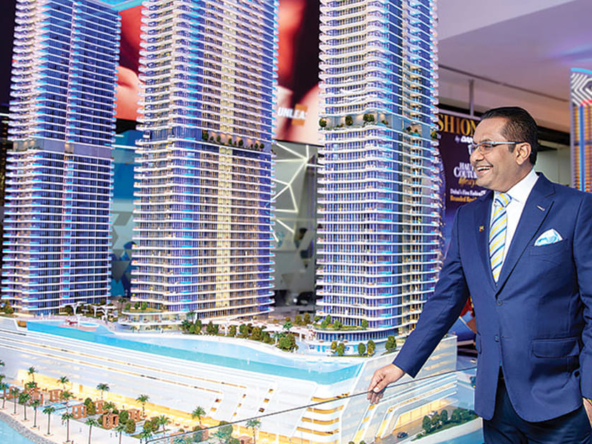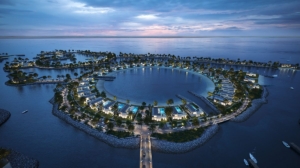The master developer enlisted Honeywell, the Fortune 100 software-industrial company, and Signify (formerly known as Phillips Lighting), the world leader in lighting, to carry out energy efficiency upgrades at its Business Bay Executive Towers development as it continues its drive towards enhancing the sustainability of its communities.
The enhancements include the upgrade of building systems and facilities in 11 towers, which will lead to 3.3 million KW/hr of energy savings annually , an approximate saving of AED1.5 million in energy bills. The resulting CO2 emissions offset is equivalent to removing 310 cars from the road for one year or planting 336 trees.
Raed Al Nuaimi, Group Chief Executive Officer at Dubai Properties, said: “We are deeply committed to creating sustainable and energy efficient communities, and this is yet another step in the right direction. In addition to facility upgrades such as this, we continue to develop large areas of greenery in our communities, as highlighted recently by the Middle East’s largest living Green Wall at Dubai Wharf.
“Our aim is to contribute to national efforts towards making Dubai an environmentally-friendly city and support initiatives that further encourage building energy efficiency in line with the goals of the Dubai Integrated Energy Strategy,” he added.
In keeping with Dubai’s efforts to double energy efficiency by 2030, Dubai Properties collaborated with Signify to retro-fit the existing lighting in 11 residential buildings and corresponding parking area to LED lights, a total of 16,000 light points, ultimately resulting in improved comfort levels for residents and visitors to the community.
From his side Goktug Gur, President and CEO of Signify in Middle East, Turkey and Pakistan, commented “Retrofitting buildings to make them more energy efficient can have a huge beneficial impact on the environment, additionally the financial impact can also be vast. We are very pleased to partner with Dubai Properties on this project. We share many of the same values, including reducing our impact on the environment and our alignment on the UAE leadership vision of 2030. Encouraging a shift to LED lighting underscores our commitment to sustainability.”
The 3.3 million KW/hr of annual energy savings is due to both the building management system upgrade by Honeywell and the shift to LED lighting carried out by Signify.
In collaboration with Honeywell, an upgraded and fully-digital building management system (BMS), has been implemented to monitor and control mechanical and electrical utilities across building systems and facilities. Integrating fan coil units (FCUs) into the BMS helps provide visibility into electricity consumption, and thereby achieves a reduction in electricity bills. As part of this priority, Honeywell implemented control logic software to operate the FCUs on a set time programme that regulated cooling and indoor temperatures based on outside air temperature. A complete analysis of the programme was also carried out to identify likely challenges and improve building systems.
“Honeywell is focused on building a smarter, safer, and more sustainable world, and we are committed to helping our customers in Dubai and across the UAE achieve better energy efficiency, cut costs, and reduce greenhouse gas emissions,” said Paolo Cervini, president for Honeywell Building Solutions, Middle East, Russia, Turkey and Africa. “We’re blending physical products with software solutions to enable smarter, more connected buildings that are greener, safer and more productive, and we are proud to partner with Dubai Properties as they work to create more sustainable and energy efficient communities.”
The initiative is another step from Dubai Properties in its efforts to develop green, sustainable and energy efficient communities. Earlier this year it revealed the region’s largest Green Wall at Dubai Wharf. The impressive vertical garden spans 1,260 square metres, features over 80,000 plants forming a leaf canopy area equivalent to around 200 trees, and is capable of offsetting an estimated 4.4 tonnes of carbon dioxide (CO2) annually.









